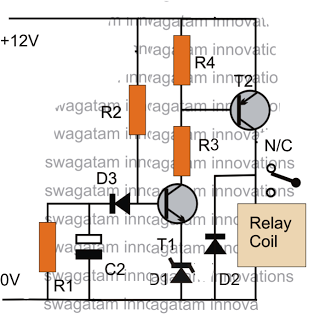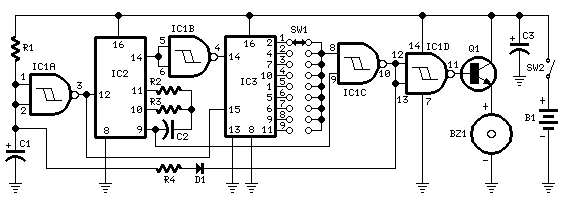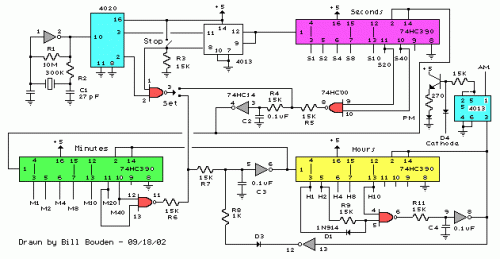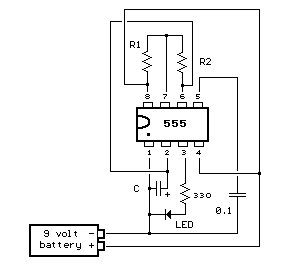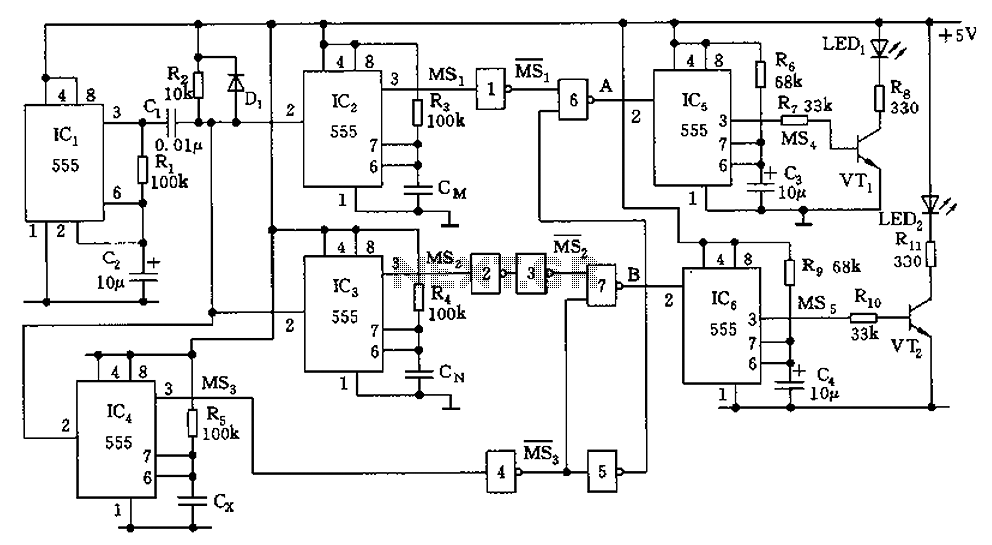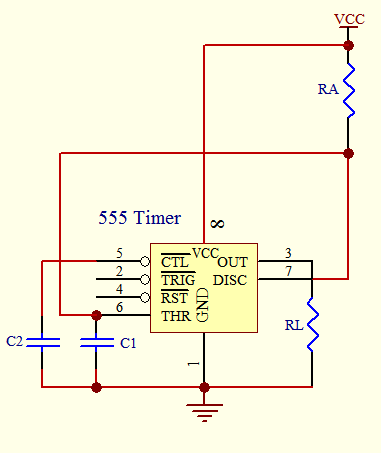
Basic Monostable Multivibrator based IC timer 555
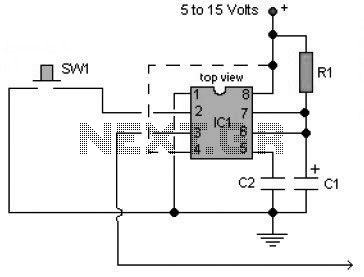
A multivibrator is an electronic circuit used to implement a variety of simple two-state systems such as light-emitting diodes, timers, and flip-flops. The monostable multivibrator will create a condition in which one of the states is stable.
A multivibrator circuit is classified into three main types: astable, monostable, and bistable. The monostable multivibrator, also known as a one-shot, is particularly noteworthy for its ability to produce a single output pulse in response to an input trigger. This circuit consists of a timing resistor, a timing capacitor, and a comparator or operational amplifier.
Upon receiving a trigger signal, the monostable multivibrator transitions from its stable state to a temporarily unstable state, generating an output pulse of a defined duration. The length of this pulse is determined by the values of the resistor and capacitor in the timing network, following the relationship \( T = 1.1 \times R \times C \), where \( T \) represents the pulse width, \( R \) is the resistance in ohms, and \( C \) is the capacitance in farads.
The output pulse can be utilized in various applications, such as controlling the timing of light-emitting diodes, generating clock signals for digital circuits, or creating time delays in various electronic systems. The monostable multivibrator is integral in applications where a precise timing interval is required, making it a fundamental component in many electronic devices.
In terms of implementation, typical components used in a monostable multivibrator circuit may include the 555 timer IC, transistors, or dedicated monostable multivibrator ICs. The choice of components depends on the desired specifications, including pulse duration and power requirements. Proper understanding of the circuit's operation and component selection is crucial for achieving the intended functionality in practical applications.A multivibrator is an electronic circuit used to implement a variety of simple two-state systems such as light emitting diodes, timers and flip-flops. The monostable multivibrator will create a condition: in which one of the states is stabl.. 🔗 External reference
A multivibrator circuit is classified into three main types: astable, monostable, and bistable. The monostable multivibrator, also known as a one-shot, is particularly noteworthy for its ability to produce a single output pulse in response to an input trigger. This circuit consists of a timing resistor, a timing capacitor, and a comparator or operational amplifier.
Upon receiving a trigger signal, the monostable multivibrator transitions from its stable state to a temporarily unstable state, generating an output pulse of a defined duration. The length of this pulse is determined by the values of the resistor and capacitor in the timing network, following the relationship \( T = 1.1 \times R \times C \), where \( T \) represents the pulse width, \( R \) is the resistance in ohms, and \( C \) is the capacitance in farads.
The output pulse can be utilized in various applications, such as controlling the timing of light-emitting diodes, generating clock signals for digital circuits, or creating time delays in various electronic systems. The monostable multivibrator is integral in applications where a precise timing interval is required, making it a fundamental component in many electronic devices.
In terms of implementation, typical components used in a monostable multivibrator circuit may include the 555 timer IC, transistors, or dedicated monostable multivibrator ICs. The choice of components depends on the desired specifications, including pulse duration and power requirements. Proper understanding of the circuit's operation and component selection is crucial for achieving the intended functionality in practical applications.A multivibrator is an electronic circuit used to implement a variety of simple two-state systems such as light emitting diodes, timers and flip-flops. The monostable multivibrator will create a condition: in which one of the states is stabl.. 🔗 External reference
